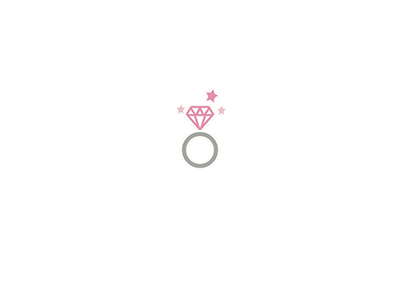Buying Diamond is an important occasion for any individual. It is hence imperative to be aware of the four C’s before investing your hard-earned money in purchasing diamond jewellery. Here are the four C’s of diamond explained in detail, so that you can understand them and make an informed and wise choice.
Cut:
Cut signifies a diamond's geometric proportions and how it has been cut. When a diamond is cut, facets are created and the diamond's finished shape is determined. Most often a diamond’s shape is mistaken for its cut. Some of the more popular shapes of diamonds include Round Brilliant, Oval, Marquise, Pear, Heart and Emerald. Within each of these shapes, however, it is the cut that determines the quality of the stone. For example, most diamonds are cut with 58 facets, irrespective of their shape
Diamond cut is perhaps the most important of the four C’s as a good cut gives a diamond its brilliance, which is that brightness that seems to come from the very heart of a diamond. The angles and finish of any diamond are what determine its ability to handle light, which leads to brilliance.

First, let's understand the structure or body of a diamond :
Diameter
The width of the diamond as measured through the girdle.
Table
This is the large, flat top facet of a diamond.
Crown
The upper portion of a cut gemstone, above the girdle.
Girdle The narrow rim of a diamond that separates the crown from the pavilion. It is the largest diameter to any part of the stone.
Pavilion
The lower portion of the diamond, below the girdle. It is sometimes referred to as the base.
Culet
The tiny facet on the pointed bottom of the pavilion, which is the portion of a cut gem below the girdle.
Depth
The height of a gemstone, from the culet to the table.
Illustrated in the given below diagram, when a diamond is well-cut, light enters through the table and travels to the pavilion where it reflects from one side to the other before reflecting back out of the diamond through the table and to the observer's eye. This light is the brilliance that forms the crux of the beauty and sparkle of any diamond.

In a poorly cut diamond, the light that enters through the table reaches the facets and then 'leaks' out from the sides or bottom of the diamond rather than reflecting back to the eye. Less light reflected back to the eye means less brilliance.
How do I know which cut of diamond is ideal for me?You can choose your ideal cut by referring to the following grades of diamond cuts,
Ideal
This is the best of all cuts and is applied to only round diamonds. Expensive than the rest it is meant for people who don’t compromise on the finer things in life.
Premium
A tad less expensive than the Ideal cut, the premium cut diamonds allows you to buy a bigger diamond at the same cost offering almost the same brilliance and fire as ideal cut.
Very Good
Moderately priced amongst all the grades, these diamonds reflect most of the light that enters them, creating a good amount of brilliance. While cutting these diamonds, the cutter opts to stray a little from the ideal diamond proportions to create a larger diamond. The effect is less brilliance than the above two grades of cuts but a larger size.
Good
Instead of cutting the extra weight off from the original crystal to create a smaller premium quality diamond, the cutter opts to maximize the area of diamond. Excellent choice for people who want to save on the cost of purchasing a diamond without compromising much on the quality.
Fair & Poor
This grade refers to diamonds which reflect only a small amount of light that enters through them. Ideal for people who are on a shoe string budget and yet want a bigger sized diamond.
Color
The second important criteria while judging a diamond is its color. Diamonds are graded into categories using alphabets. The color scales runs D, E and F for most expensive white diamonds to categories from M to Z for light yellowish color.

A colorless diamond can be compared to a clear transparent window that reflects back the maximum amount of light. Hence a diamond with the color ‘D’ or alphabets closest to it will display the highest brilliance. The formation process of a diamond ensures that only a few, rare diamonds are truly colorless. Thus, the whiter a diamond's color, the greater its value.
Diamonds graded D through F are extremely rare and that is what makes them most desirable and expensive. Such diamonds are cynosure of all eyes but difficult to obtain. As diamonds graded G through I show virtually no color to the eyes of a lay man and are less expensive, they are most commonly used in jewellery. They too offer a good deal of brilliance and sparkle.
Diamond graded from J through M will have a hint of yellow color and will display lesser brilliance and sparkle.
Also available are Fancy natural colored diamonds such as red, pink, blue, green, yellow, brown etc. The above rules of grading do not apply to them and they are judged on the basis of the intensity of their color and their rarity.
Clarity
When a diamond is formed, it is possible for minute particles of non-crystallised carbon or non-diamond crystals to be caught within the diamond. These imperfections are called inclusions.
Inclusions are not really visible to the naked eye, however they interfere with the passage of light through the diamond. Therefore the fewer inclusions a diamond has, the more expensive it is and also rare

A diamond’s clarity refers to two things,
Inclusions which are found within the diamond and are included in internal flaws Blemishes which are found on the surface of diamond and are included in surface flaws However, in the diamond grades used to denote clarity, none of the grades include the term "blemish” and all flaws are called "inclusions." Inclusions include flaws such as air bubbles, cracks, and non-diamond minerals found in the diamond. Blemishes include scratches, pits, and chips. Some blemishes occur during the cutting processes (most often at the girdle).
Process of determining a diamond's Clarity
Like color, clarity is also categorized using international grading scales. The categories of clarity are decided by the number, size and position of the inclusions within the diamond. A 10x loupe magnifying glass is used for grading a diamond’s clarity. Grades range from Flawless (diamonds which are completely free of blemishes and inclusions), to Imperfect 3 (diamonds which possess large, heavy blemishes and inclusions that are visible to the naked eye).
F
Flawless: No internal or external flaws. Extremely rare.
IF
Internally Flawless: no internal flaws, but some surface flaws. Very rare.
IF
Internally Flawless: no internal flaws, but some surface flaws. Very rare.
VVS1-VVS2
Very Very Slightly Included (two grades). Minute inclusions very difficult to detect under 10x magnification by a trained gemologist.
VS1-VS2
Very Slightly Included (two grades). Minute inclusions seen only with difficulty under 10x magnification.
SI1-SI2
Slightly Included (two grades). Minute inclusions more easily detected under 10x magnification.
I1-I2-I3
Included (three grades). Inclusions visible under 10x magnification and also easily detectable by the naked human eye. Buying diamonds in any of these grades is not recommendable.

Carat

A carat is the unit of measure used to determine the weight of a diamond. The term "carat" is derived from the original method of using carob tree seeds to weigh diamonds. One seed from this tree was equivalent to one carat.
The actual weight of one carat is equal to 0.2 grams or 200 miligrams. Further to accurately ascertain the weight of diamonds each carat is divided into 100 points. Diamonds of less than one carat in weight are called as "pointers" or “cents”. For example, a 0.15 carat diamond would be called a "15 pointer".
A diamond is formed in the rarest of rare circumstances, and typically this phenomenon is found only in small amounts. That means that larger diamonds are uncovered less often than smaller ones. Thus, large diamonds are rare and have a greater value per carat. For that reason, the price of a diamond rises exponentionaly to its size.
Diamonds are usually weighed prior to setting for more accurate measurements. The pricing of diamonds is done according to its caratage, after considering its quality. The carat weight of a diamond is the only ‘C’ which is indicative of its size, and not indicative of a diamond's quality. Two diamonds having the same carat weight, the one of better quality will command a higher price per carat.
Shapes of Diamond
After you are aware of the four ‘C’s, you can choose which shape of diamond to go for. The most popular and traditional diamond shape is round brilliant cut diamonds. But there are several other fascinating shapes which also appeal to woman who like to stand out.

Round Brilliant Diamonds
As said earlier, this shape of diamonds is the most conventional and popular choice of jewellery buyers across the world. It has the ideal 58 facets proportionately distributed amongst it crown, and pavilion.
Oval Diamonds
Ovals diamonds create an illusion of length. It is the perfect choice of shape for women who has short fingers to make them look elongated.
Marquise Diamonds
Resembling the shape of eyes, this shape is also favored by many jewellers to accompany round diamonds in elaborate jewellery and give it an extra edge.
Pear Shaped Diamonds
The pear shape reminds you of a dew drop and hence it is considered to be a very beautiful shape. Mostly used in earrings and pendants.
Heart Shaped Diamonds
The heart shaped diamonds are preferred by romantics as an expression of their love. Most suitable to be used in setting for an engagement ring or pendants.
Emerald Cut Diamond
This is a rectangular shaped diamond. It is most widely used for setting in elaborate rings for men
Princess Cut Diamond
A square shaped diamond, the princess cut looks classy and sophisticated. Many brides prefer an engagement ring with a princess cut diamond as it looks stylish and trendy. Also used quite often in solitaire pendants
Trilliant Diamonds
This diamond is cut in a triangular shape. This shape is a relatively new phenomenon and not widely used in jewellery. But it is surely catching on.
Cushion Cut Diamond
A combination of emerald cut and oval cut, the cushion cut diamond is rectangular with round edges. You can go for a solitaire pendant in cushion cut as it gives the effect of a larger diamond. Also it can be enhanced by setting smaller round diamonds around it.


